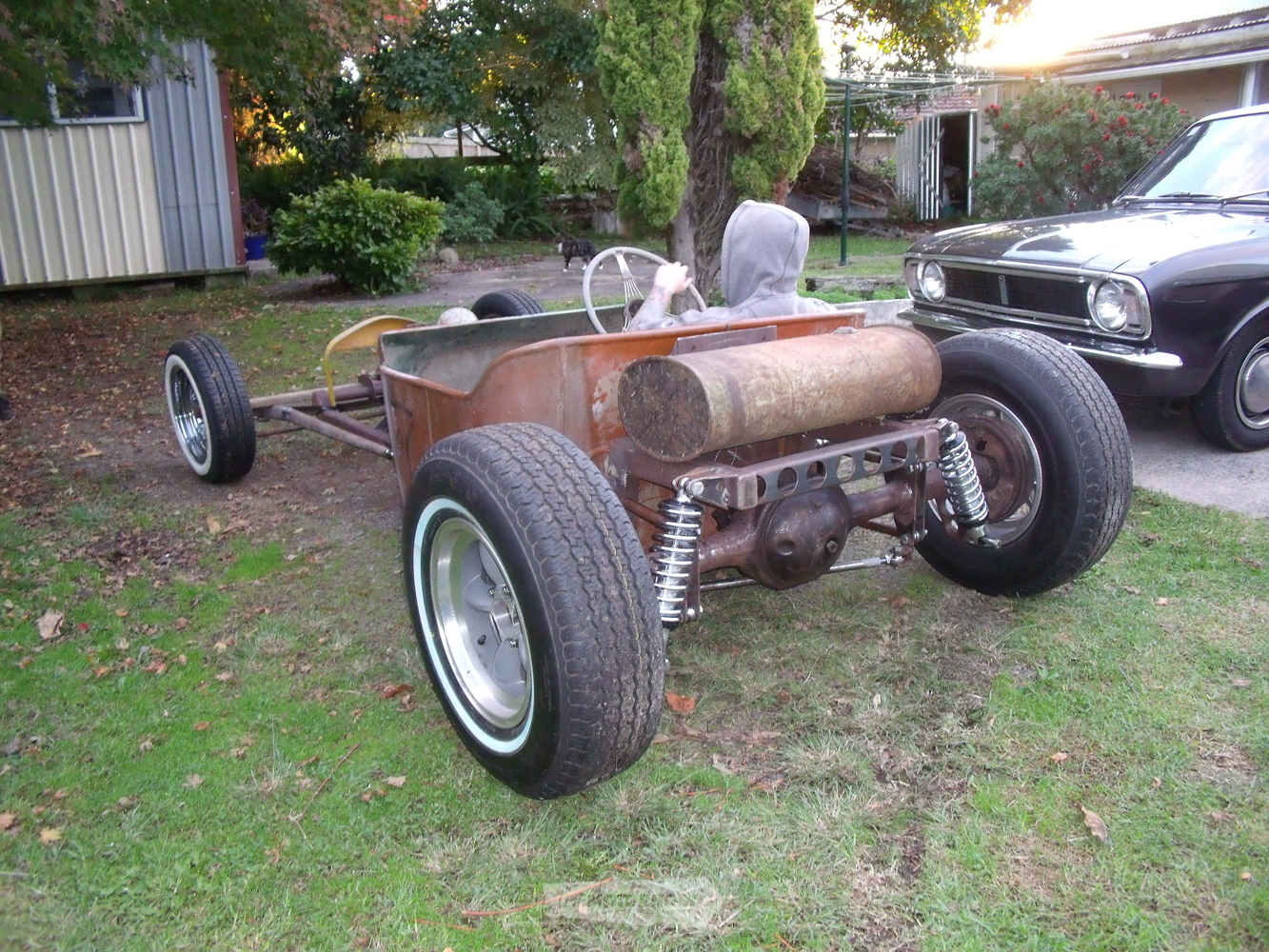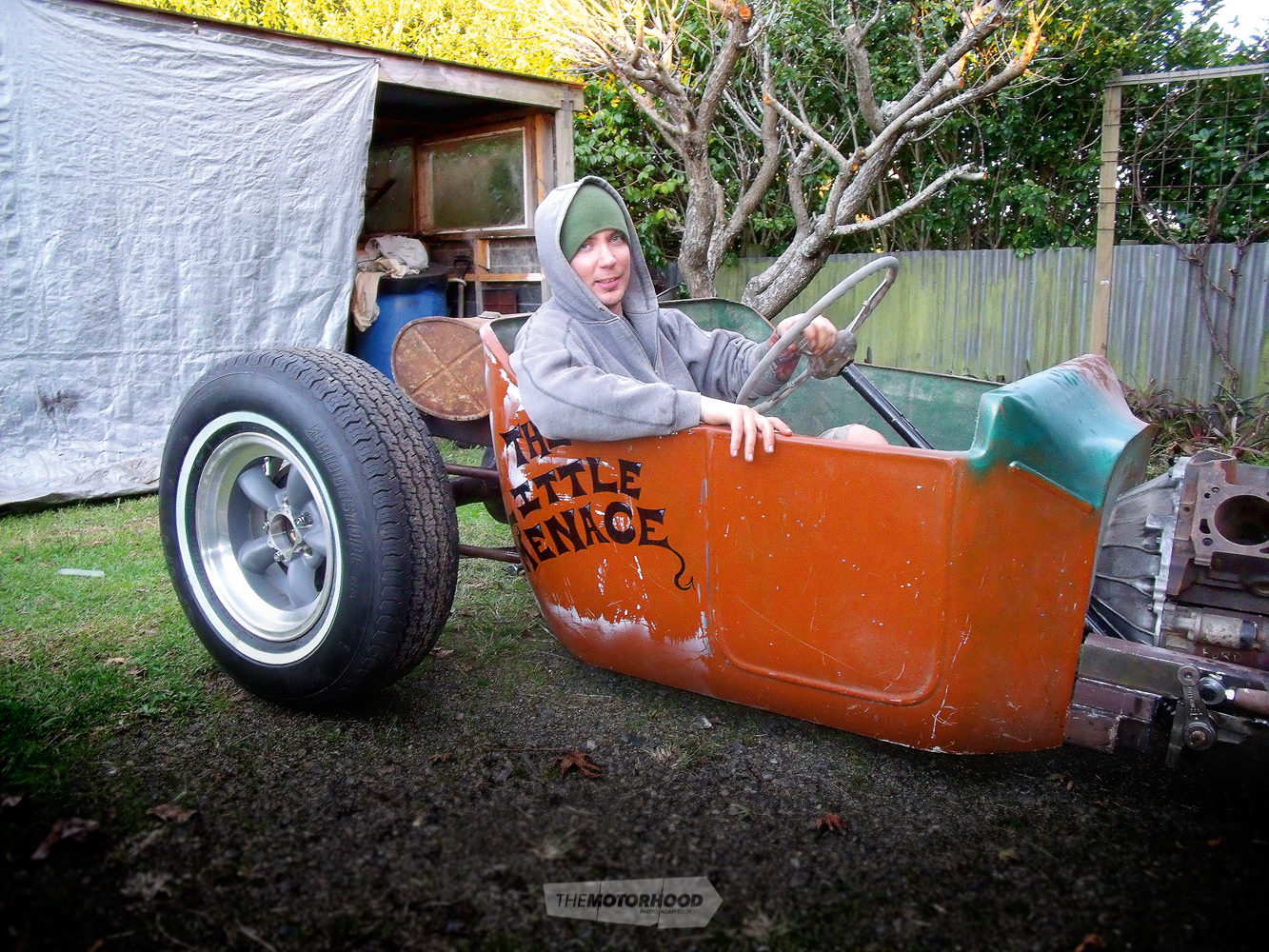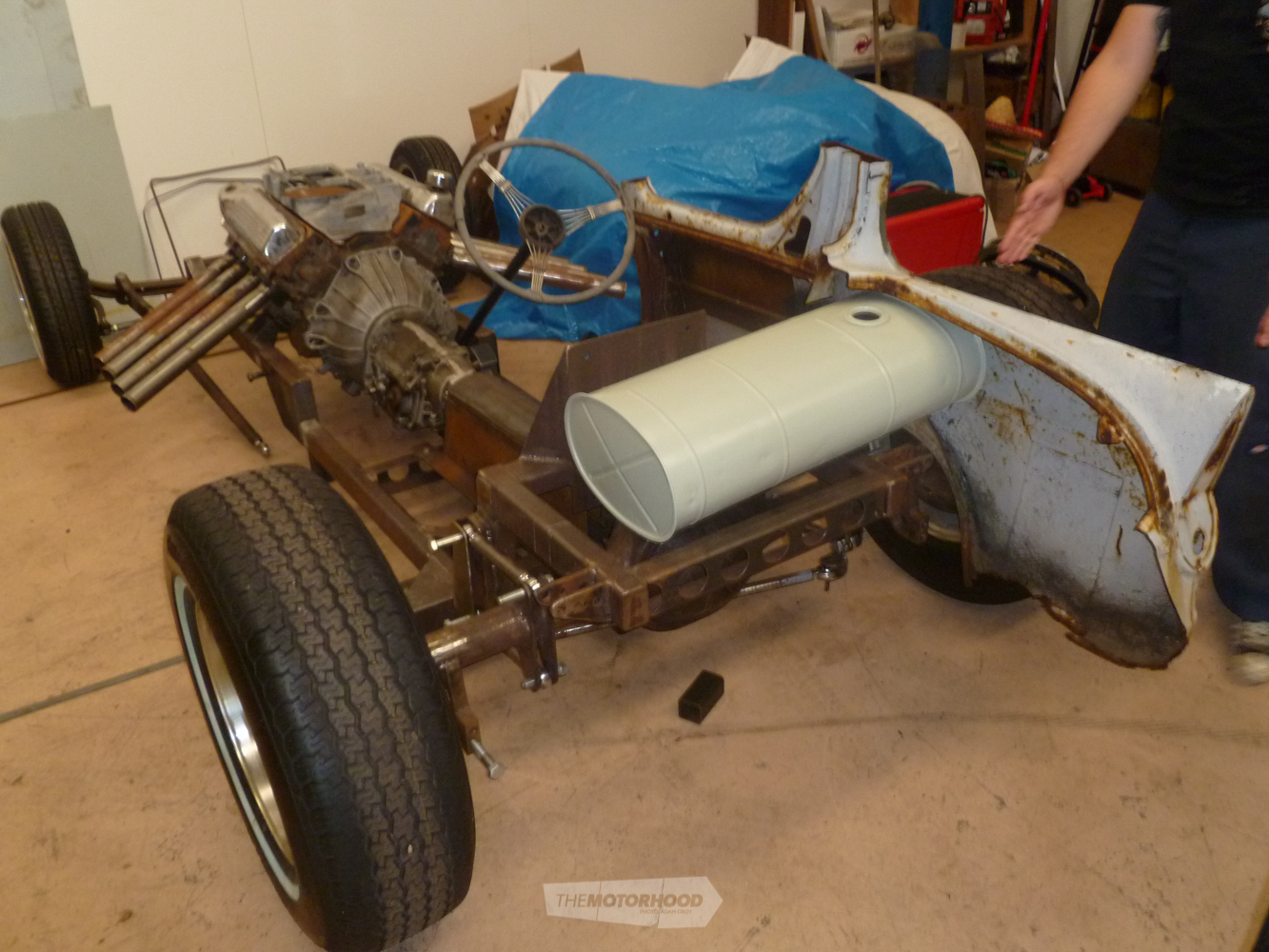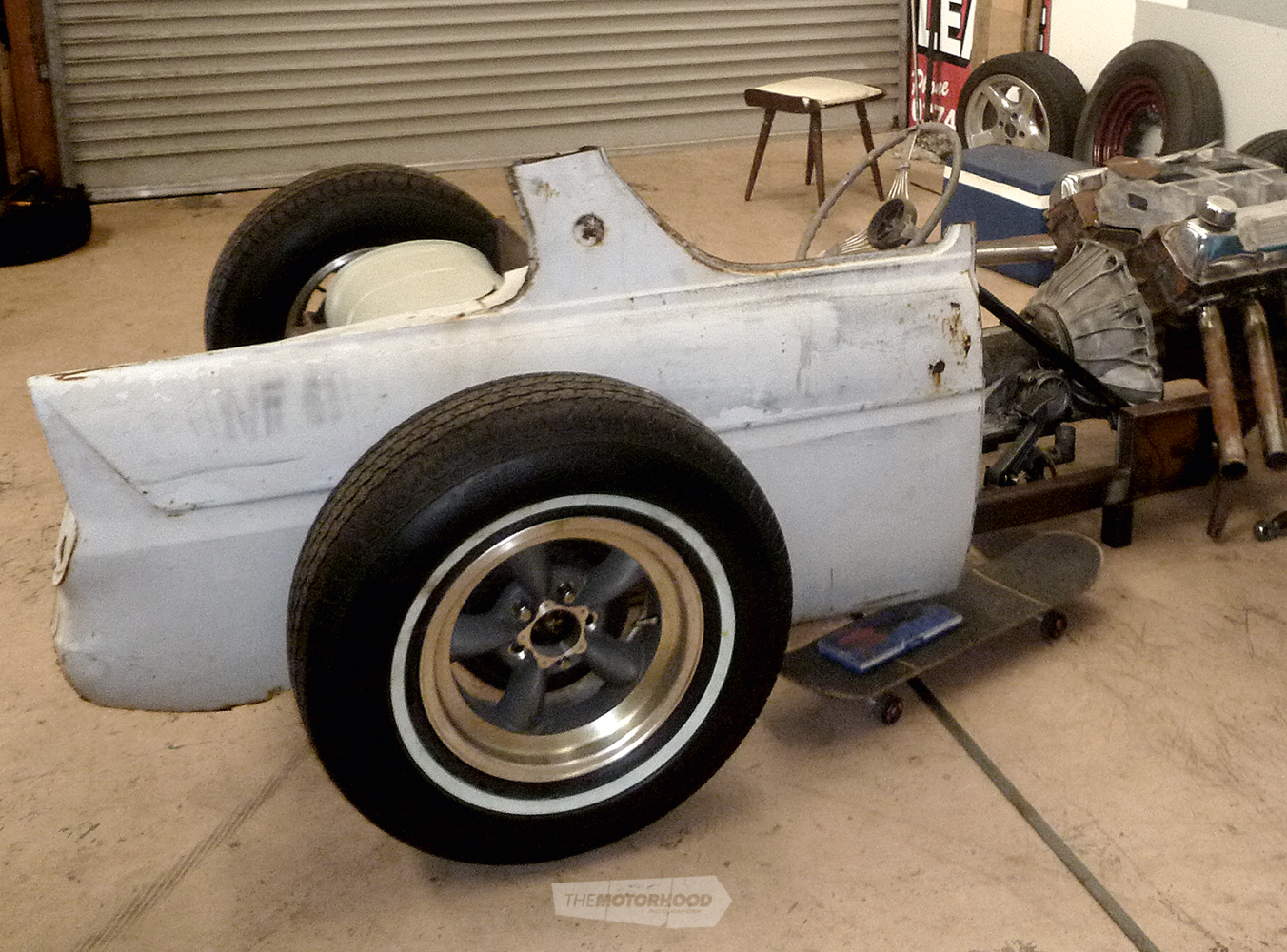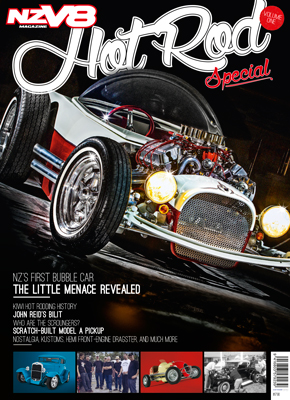Luke Ennion is bringing back the golden days of show rods and proving you don’t need to spend millions to do it!
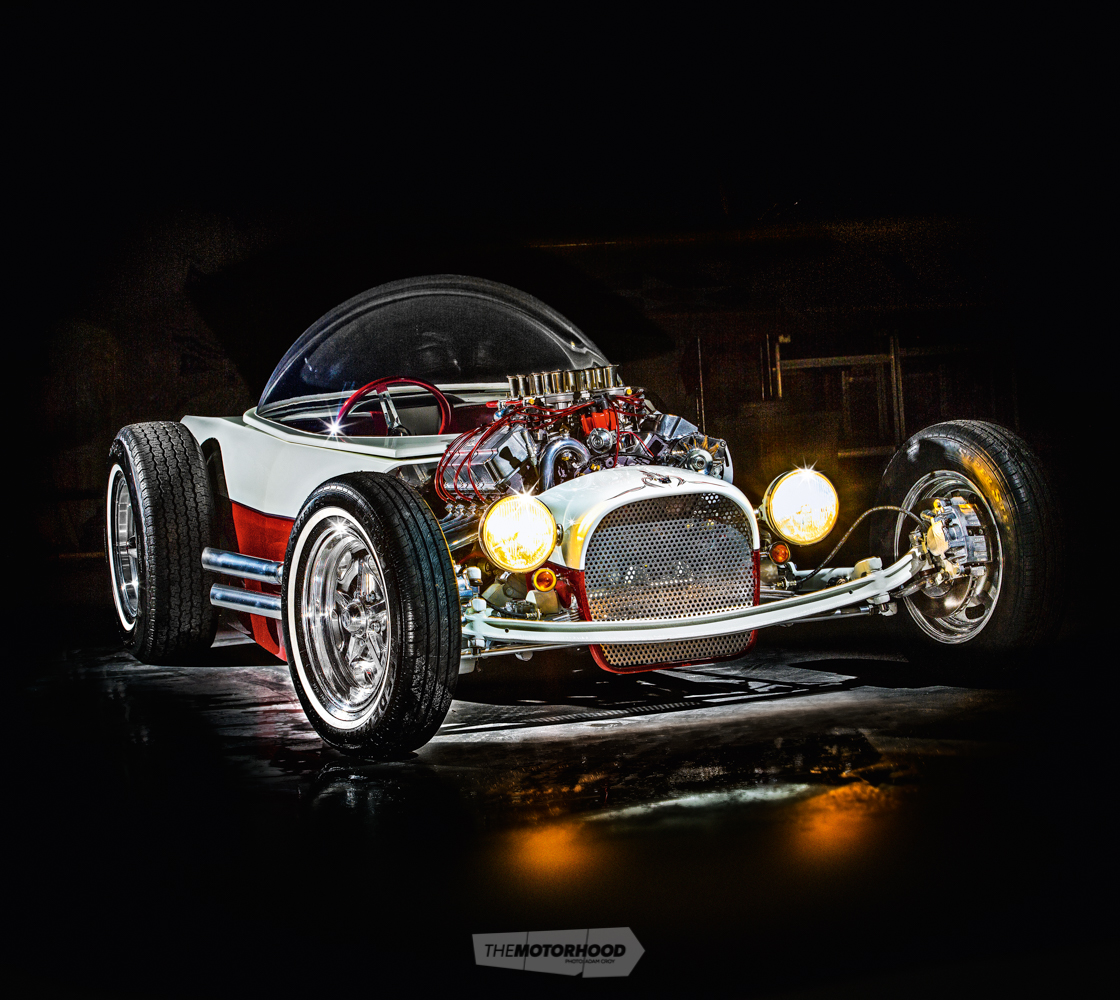
Although by 1961 Ed ‘Big Daddy’ Roth was starting to become a well-known name in the American hot rodding scene, the unveiling of his latest creation, dubbed ‘The Beatnik Bandit’, took his reputation to a whole new level. The Beatnik Bandit was just one of a handful of fibreglass show rods built over the years by Roth, who was an artist by trade, but it was the first one to incorporate a giant dome in place of a traditional roof-and-windscreen arrangement. So out of this world was the car that, by 1962, Revell Models had started to turn Roth’s full-sized cars into kitsets for everyone else to enjoy building.
Roth’s creations were unveiled to an awestruck crowd and would go on to be the subjects of great acclaim and scrutiny, and, earlier this year, a car inspired by them was unveiled to a similar reaction. The car, named ‘Little Menace’, is the brainchild and creation of young Aucklander Luke Ennion. You might assume that Luke used to collect the Revell Models and long dreamt of building his own Roth model, but the reality is quite different to this. When the build started, the plan was never for it to look anything like it does now.
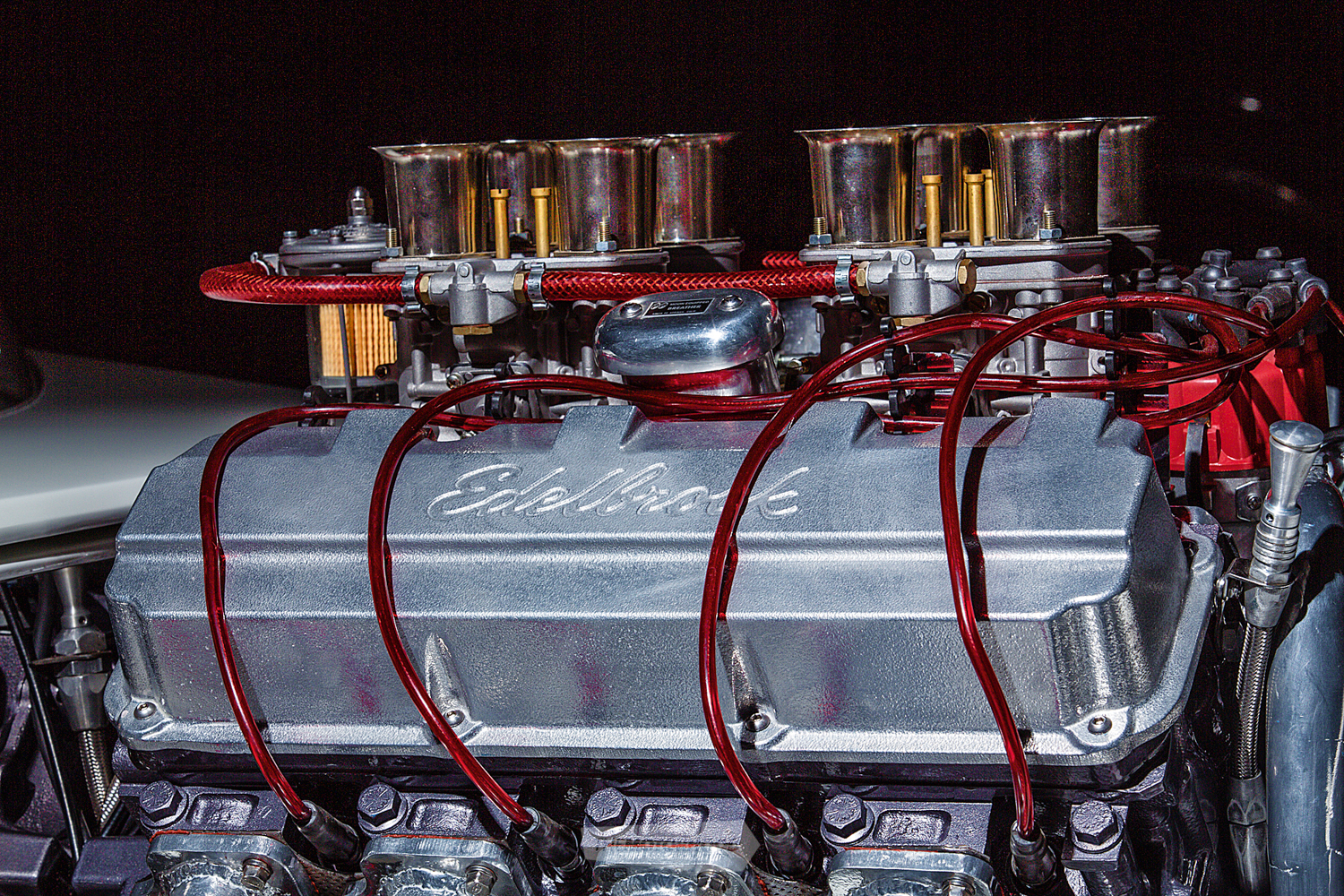
Luke remembers how the original build began and the moment things changed direction: “It started back in 2005, when my father and I went to Pukekohe for a car show. That is where I saw my first bare-steel Model A pickup. I told Dad then and there that I wanted to build a hot rod! Later, I asked Dad about the T-bucket body that was hanging in the shed at home. I found out there was a chassis to go with it under the house, and, about an hour later, we had the body on the frame mocked up in the backyard.”
At that stage, Luke was playing with a Mk II Cortina. With that his priority, the bucket had to wait in line before progressing further. However, knowing that he wanted to build the car himself — much as his dad, Dennis, had built his own cars — Luke enrolled in welding night classes while he continued to collect parts. As it was to be a budget build, he picked up whatever bits and pieces he could find going cheap, such as the Model A front axle that set him back a few boxes of Lion Red. An eight-inch diff found in Trade and Exchange was purchased, too, along with a C4 transmission from one of Dennis’s mates.
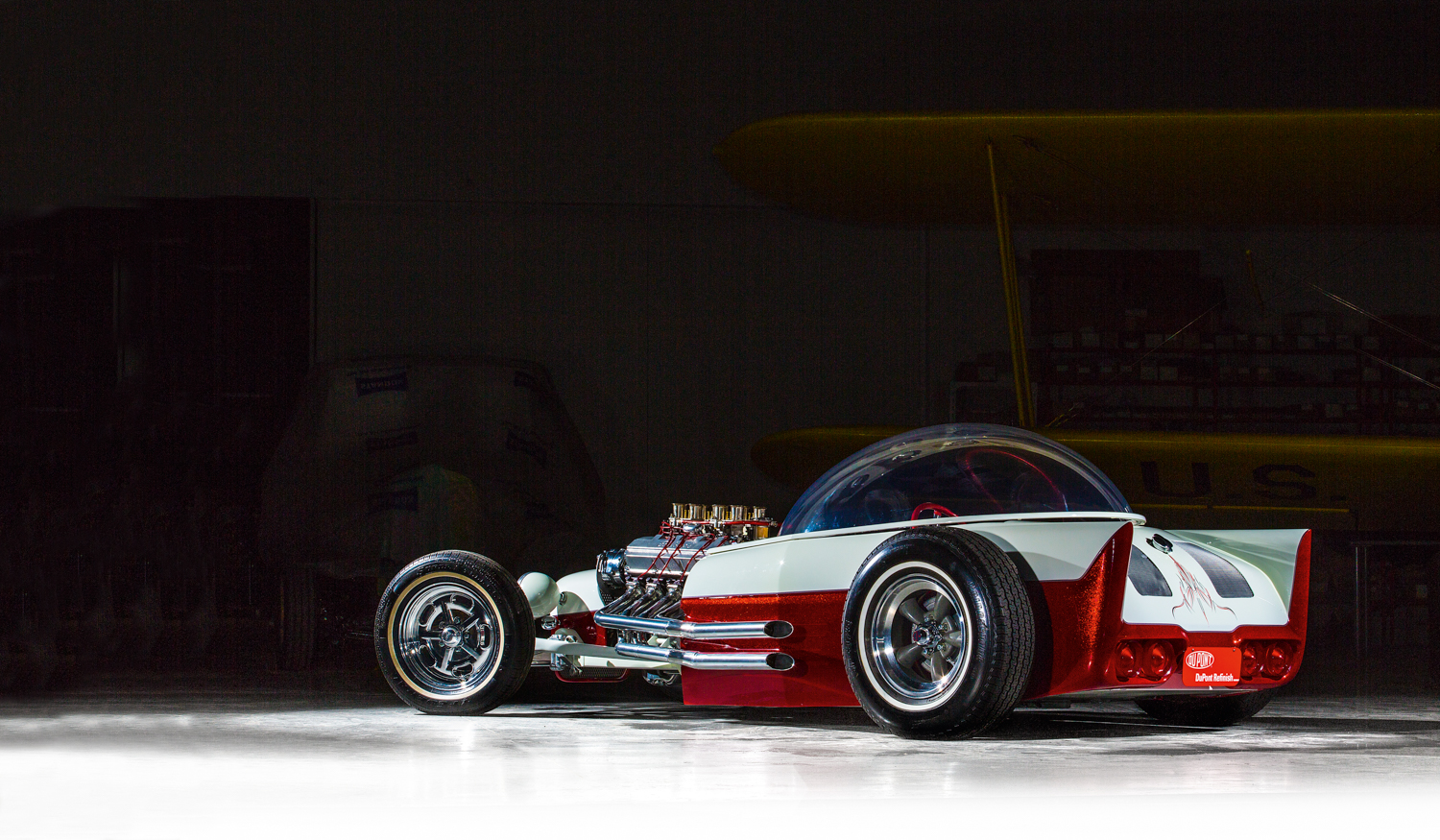
On mocking the chassis up with the new parts, Luke discovered that the ’70s-style high-riding bucket wasn’t quite the look he wanted; he preferred the low-slung look of John Pavlovich’s Hemi-powered car. The original chassis was soon back under the house and a call to an engineer saw a pile of 75 x 50mm box-section tubing arrive so that Luke could stitch up a more suitable design. With a five-inch kick at the front and 15-inch kick in the rear, the T-bucket body would now sit nice and close to the ground, just as Luke wanted.
It was at this point that the old Cortina failed a WOF, so attention was once again diverted in its direction, this time for a major rebuild. During the four years that took, Luke was lucky enough to get an apprenticeship with New Zealand Steel, where he could advance his skills even further as he worked his way towards becoming a heavy fabricator, a job he still has today.
The motivation for getting back into the T-bucket build wasn’t just the completion of the Cortina; at around the same time, Luke’s girlfriend — now fiancée — Theresa, was flicking through a hot rod magazine and pointed out a T-bucket she liked the look of. By this stage, Luke’s T had almost been forgotten — so much so, that Theresa wasn’t even aware that Luke owned it! But, as we all know, there’s no better motivation than a bit of interest from a member of the opposite sex.
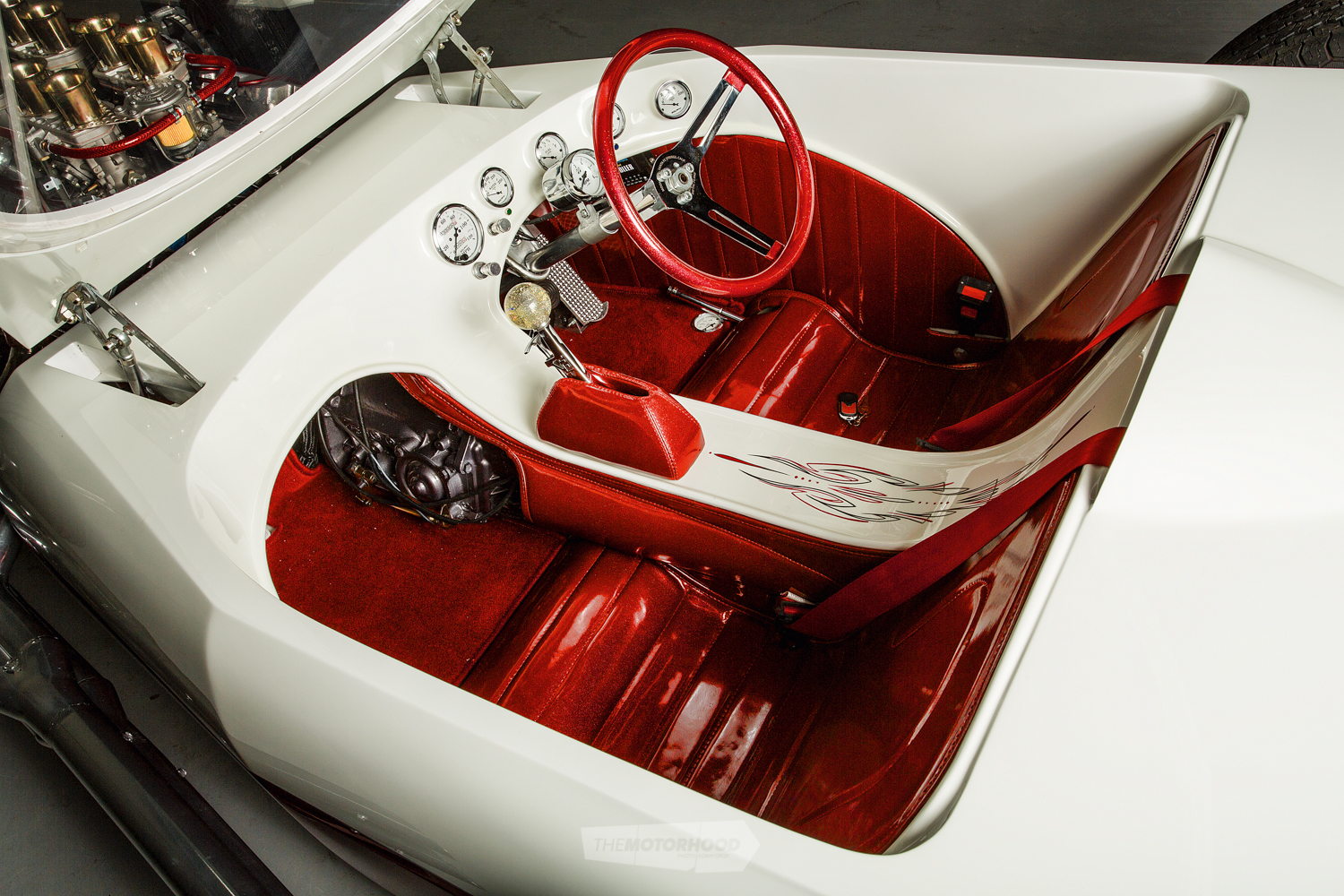
With that impetus, Luke’s newfound skills, and the contacts made through a lifetime of family hot rodding, the build was kick-started. As doing it on a budget was far more important than using brand-name parts, a VW Kombi steering box was sourced, and the wishbones were split and fitted with a re-arched spring and some Ford Anglia shocks. The rear end was fitted with a custom four-link and QA1 coilovers, while a gearbox mount and K-member were fabricated out of steel plate. The car was then christened ‘Little Menace’ (see caption at left). Little did anyone know what lay ahead for it.
A trip to Beach Hop, and Luke discovered that he didn’t really want a T-bucket at all, as there were too many around. While the project could have stumbled and fallen here one last time, instead it — or, rather, Luke’s mind — went into overdrive. The more ’60s show cars Luke looked at and the more he researched, the more he was convinced that turning the T-bucket into a show car was the way to go. The only catch was that it had to have a bubble top.
Rather than use fibreglass, which is what the Roth bodies were made from, Luke wanted the car to be steel. However, when looking for American donor panels to use, he soon realized that the prices ruled that option out. Thinking outside the square, he thought of using MK I Cortina parts, but he was informed just how collectable they’d become and how hated he’d be if he wrecked one. Ford Anglias, however — well, they’re not exactly expensive nor in high demand; better still, a friend had one, from which Luke could take any bits he wanted.
With the help of his younger brother, Brock, and a sabre saw, Luke removed the rear quarters, door skins, and dash panel from the donor Anglia. Using 8mm and 10mm round bar as a skeleton to get the right shape, he soon had the panels mocked up on the T-bucket chassis and ready to be stitched together. A few phone calls to his older brother, Dave, a car restorer living in Australia, for some hints, and Luke soon had the body welded together.
Of course, building a car with no set plan and a pile of parts can throw up all sorts of interesting situations, as Luke explains, “One night, over a few beers, Brock and I started looking at mounting the salvaged dash from the Anglia, until Brock suggested using it for the rear bumper. After a few more beers, we decided that’s where it would end up staying, becoming a home to four Thunderbird tail lights.” Yep, take a closer look, and you’ll see one set of lights where the Anglia speedo was and the other in the glovebox. It was this sort of creative thinking that enabled the whole build to be kept to an amazingly low budget.
While the body was being sorted at home, a 351 short block sourced from an uncle was dropped off to Franklin Engineering for machine work before heading to Peter Woodward for final assembly. That assembly included fitting match-ported heads, plenty of parts from Comp Cams, and that seriously cool Aussiespeed Quad Weber manifold to top it all off. Luke’s dad — by now as proud as punch of what his son was achieving — was tasked with creating the vacuum tank that hides under the manifold to help get the four 44mm IDF carbs to run as they should. Included in the driving department was a heavy-duty tapered driveshaft created by Russell at Driveshaft Specialists NZ. While Roth’s original creations were never really designed as true drivers, Luke was determined to make sure his car was, and did everything he could to ensure it would end up road legal.
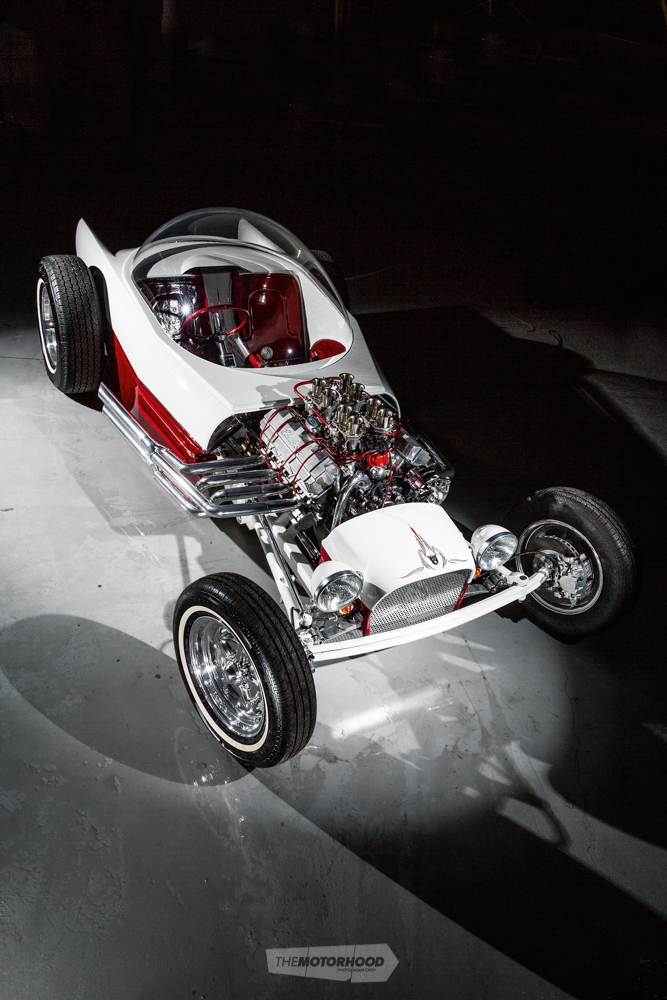
With minimal room out front, the radiator has been tucked away in the rear, along with a Davies Craig electric fan, while a matching electric water pump up front makes sure the water circulates. Also hidden under the rear are the battery and twin fuel pump / tank set-up.
Showing how far he’d come since those early welding lessons, Luke knocked up the gorgeous headers himself, making sure that both sides were perfect mirror images before sending them off to be HPC coated. While all this was going on, he still hadn’t quite figured out how the bubble top would work or where exactly it would come from. Thankfully, a friend of a friend mentioned that he knew a boatbuilder who could blow-mould such a thing. The ensuing phone call to Cambrian Plastics was met by confusion when Luke gave the dimensions and said it was for a car, but, nonetheless, the company assured Luke it could indeed create precisely what he was after.
“A week later, we had the bubble sitting on the car. Then came the fun part of working out how to make it lift,” says Luke. “I chose Mk II bonnet hinges — mainly because I had a few lying around — and combined them with a wooden frame made with the help of Rob Ellery and John Churchill.
“I started playing around with an electric-seat motor, but, after a lot of failed attempts with gas shocks, I finally went with Rob’s idea of hydraulics. With the help from DKM Fishing and Marine, an old boat motor was relieved of its hydraulic pump, just leaving me to source some rams for the correct amount of travel.”That hydraulic system was matched to an alarm remote, and now opens and closes at the push of a button, much to the admiration of onlookers.
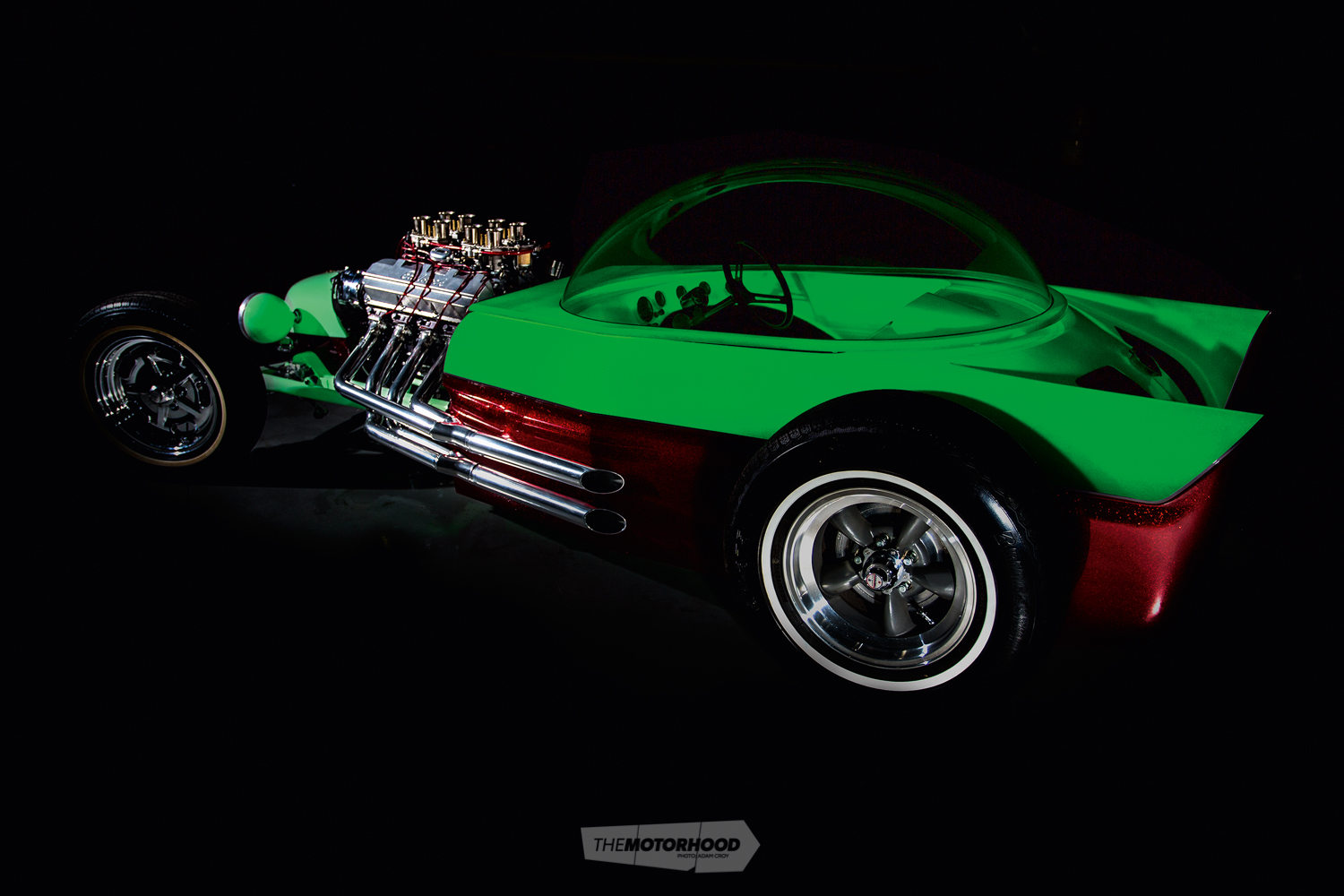
As the car neared completion, Luke knew that, to get it looking exactly right, there was only one person that could be called on for their panel-beating expertise — his brother, Dave. Dave’s flight was booked, and the car was sent off to Auto and Aero Restorations to be sandblasted before his arrival. A week later, the now arrow-straight body was off to Menzies Car Painters, where good friend Clint Woolford coated it in primer. With the car being so confined — in the engine bay, interior, and rear — the decision was made to get it running in this state, before it was torn down for final paint.
Once the car was assembled, Peter Woodward was enlisted again to help fire it up. As you can imagine, with just zoomie exhausts, it made a hell of a racket inside a two-car shed — but the decibel level was second only to that of the cheers of excitement surrounding it.
Around January this year, the plans to unveil the finished product were hatched, and that put a strict deadline on its completion, due to the fact that Dave would be over from Australia once again. As Luke says, “At this stage, sleep was not a priority. With the chassis first on the paint list, it was off to Chris Dear Panelbeaters for a clean-up ready for blasting and then paint.”
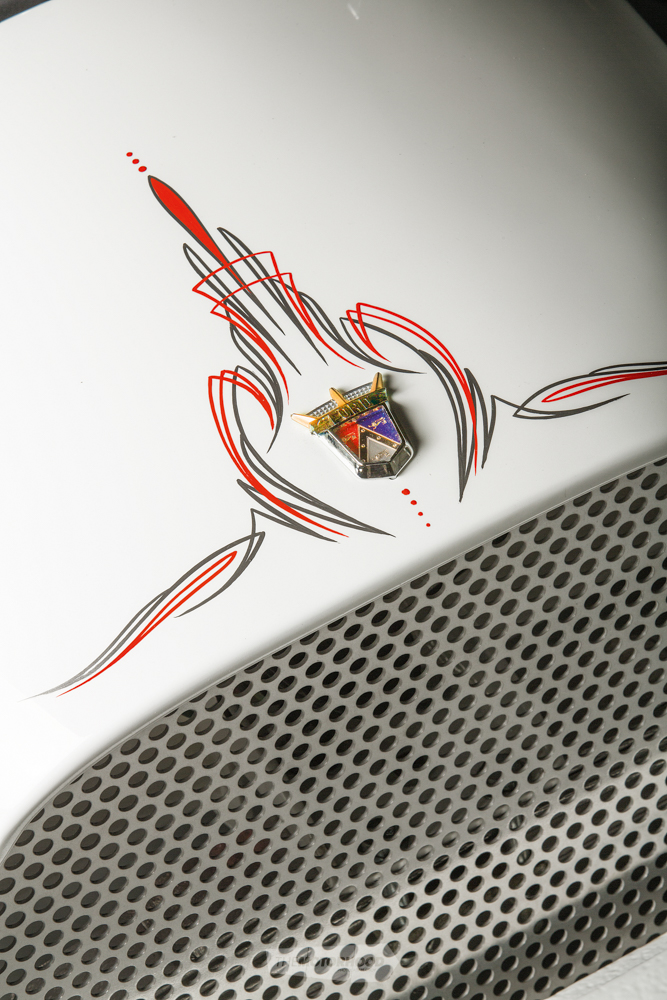
This, however, was not going to be your ordinary paint job. With Clint having contact with Resene Automotive and Light Industrial, which supplies the DuPont Refinish range of paints, the idea to make the car glow in the dark came about. Add to that some metal flake and pinstriping, and you’ll see there was a serious amount of complexity involved. Chipping in and treating the car like his own, Clint pushed on and made sure it happened, starting with the chassis, which was painted white with glow-in-the-dark clear, followed by the top half of the body.
Spraying the glow-in-the-dark paint ended up being a bit testing, as it is invisible to the naked eye, forcing Clint to switch the lights off and hope for the best as he painted in the dark! With that layer completed, Luke and Clint turned their attention to loading as much flake onto the bottom half of the body as possible. The result is a unique mix, and one that lives up to the lofty heights of those original Roth cars: while the flake pops in the sun, the white jumps when the light disappears.

The finishing touch to the build was the matching interior. While there’s not exactly a lot to it, the style and materials chosen truly could not have been better. Perrett from Audio and Upholstery worked his magic on the thin seats, while Luke topped the look off with Auto Meter gauges and a metal-flaked steering wheel.
The roof was opened and closed for the first time just one day before the car’s unveiling; while no-one knew if it’d work, thankfully, it did — not only in action but also in amazing all those who saw it then and who have seen it since.
Although the build process was long, thanks to Luke doing most of it himself, calling on friends for their help when needed, and striking a few deals along the way — such as with the paint — the total cost was less than many other hot rodders have paid for their paint jobs alone. While the result is one of the coolest custom cars you’ll ever see, what’s even better is that Luke has proved you don’t need to spend a million dollars to build something totally out of this world.
From here, Luke wants simply to enjoy the car and tick off the last few items for certification. However, there’s already an offer on the table to show the car in Australia later this year. Regardless of whether that works out, one thing’s for sure: we haven’t seen the last of Luke Ennion. If he can build this as his first hot rod, and do so on a budget, just imagine what he might come up with next!
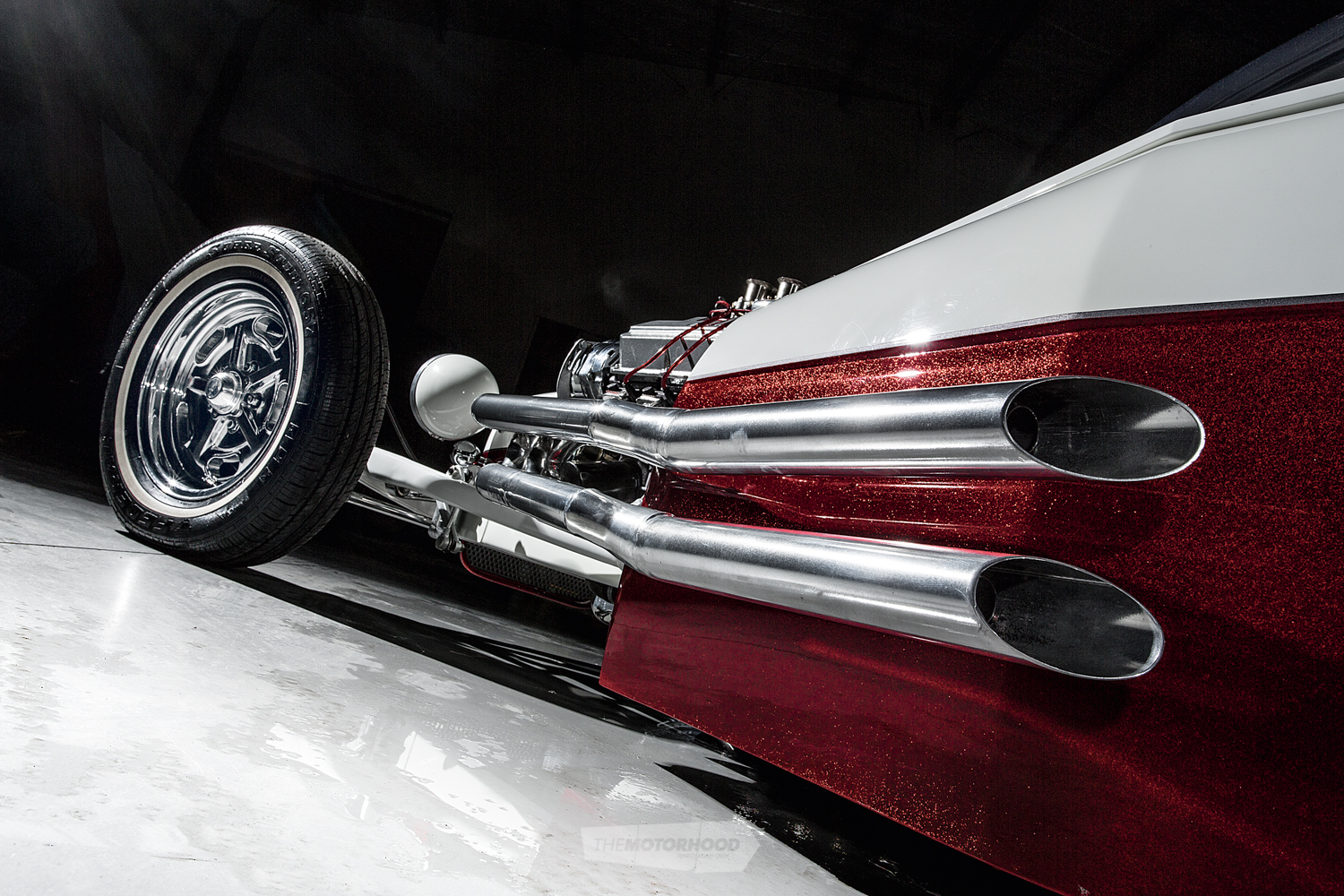
Luke Ennion
Car Club: Pukekohe Hot Rod Club
Age: 29
Occupation: Horticulturist / Heavy fabricator
Previously owned cars: 1968 Mk II GT Cortina, 1966 Ford XP Falcon
Dream car: Any one of Ed Roth’s
Why the bubble car? I wanted to build something to stand out and bring back that ’60s show-car style rather than build something with off-the-shelf parts
Build time: Four years
Length of ownership: Since 2005
Luke thanks: Resene Automotive and Light Industrial for the DuPont paint; HPC; Menzies Car Painters; Kerry Jones Engineering; Perrett at Audio and Upholstery; Jeff at The Shock Shop Waiuku; Craig Chamberlain; Tony at Auto and Aero Restorations; Behind the Lines Kustom Pinstriping; Dad; Mum; my brothers, Dave and Brock; my fiancée, Theresa; ‘Candyman’ Clint the painter; Russell at Driveshaft Specialists NZ for the driveshaft; Nick Jones for the machining; Peter Woodward for the engine; and all the countless mates who helped out!
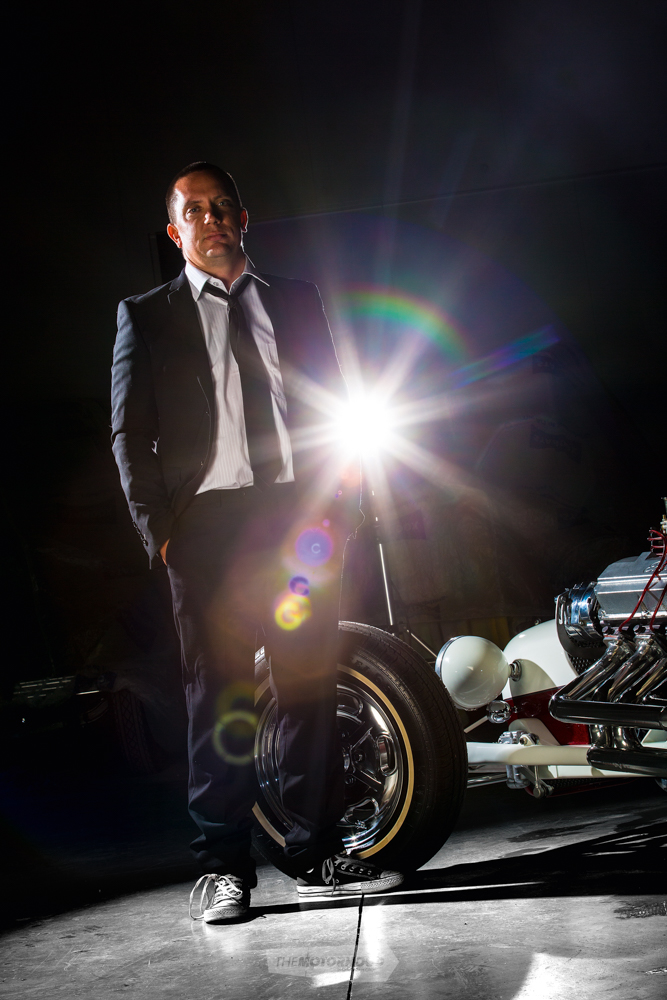
2014 Custom Bubble Car
Engine: Ford 351 Cleveland 2v, +.030-inch Federal-Mogul hypereutectic pistons, stock crank, stock rods, ARP fasteners, balanced and blueprinted match-ported heads, stainless valves, aftermarket springs, Comp Cams camshaft, Comp Cams roller rockers, Aussiespeed Quad Weber manifold, quad 44 IDF carbs, twin fuel tanks, twin Carter fuel pumps, Mooneyes ignition leads, four-into-two-into-one lake pipes, boot-mounted radiator, Davies Craig electric fans, Davies Craig water pump
Driveline: Ford C4 automatic transmission, Ford eight-inch diff
Suspension: Model A suicide, transverse leaf, Ford Anglia rear shocks, four-link, top mount Panhard bar, QA1 coilovers
Brakes: Wilwood pedal box, Falcon discs and calipers, Ford drum rear
Wheels/Tyres: 15 x 4.5-inch American Racing Salt Flat Special front rims, 15 x 7-inch American Racing Torq Thrust rear rims, whitewall tyres
Exterior: Handmade steel body and nose cone, custom polycarbonate dome, DuPont Refinish glow-in-the-dark paint
Chassis: 75 x 50mm box chassis, five-inch front kick, 15-inch rear kick
Interior: Pressed-steel seats, Mooneyes 15-inch steering wheel, Rat Fink metal-flake shift knob, TCI quick-gate shifter, Lokar handbrake, Auto Meter Classic gauges
Performance: Untested
This article originally featured in the NZV8 Hot Rod Special — to get your grubby mitts on a copy, click the cover below





